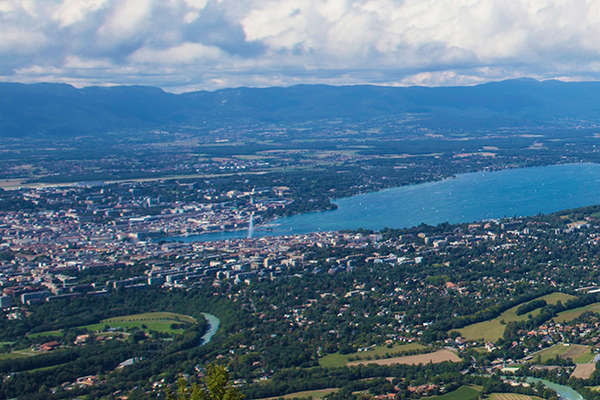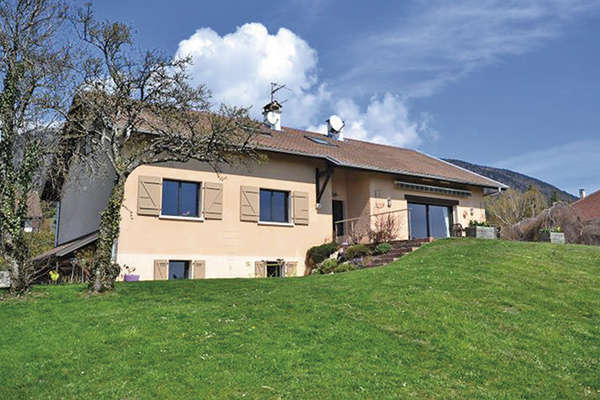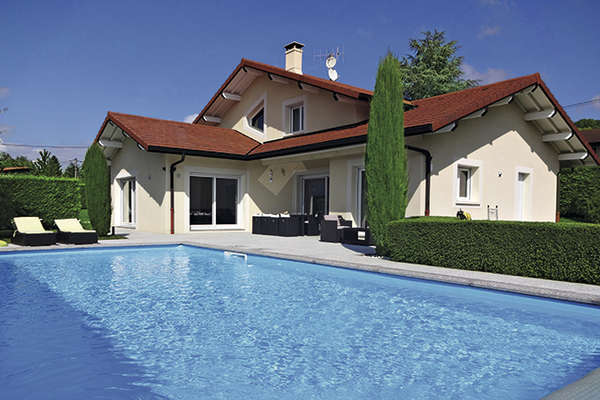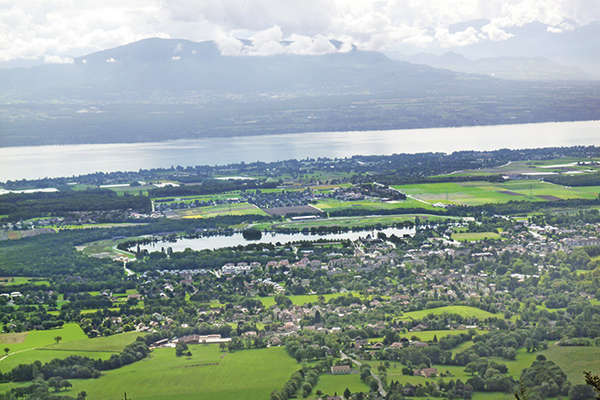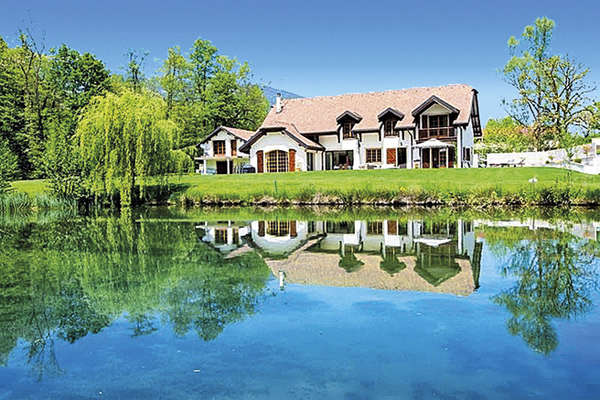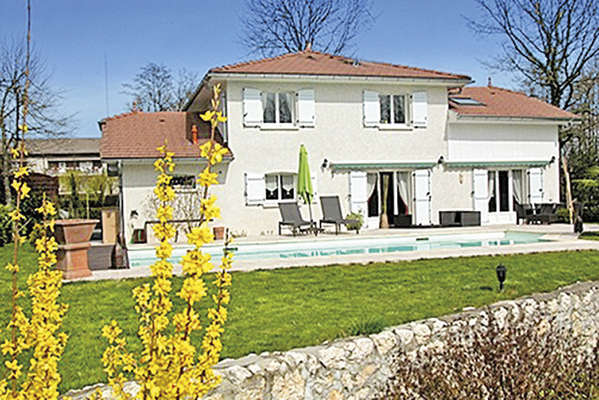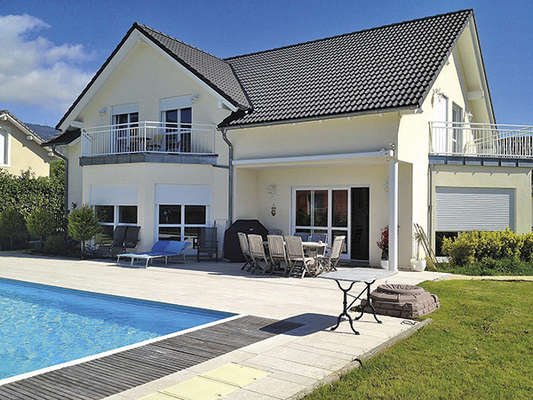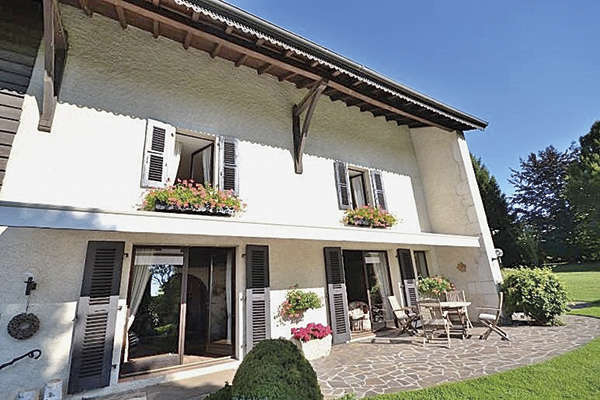Villas in La Baule, a mosaic of different eras
By Cécile Olivéro - 30 May 2012
La Baule boasts a natural and architectural heritage that is really quite remarkable. Parks, gardens and villas compose a picture in which eclecticism and fantasy are the predominant features.
77 kilometres west of Nantes, La Baule began to develop its tourist industry at the end of the 19th century, experiencing a Golden Age that peaked during Roaring ‘Twenties. Apollinaire, who stayed there with his friend, artist Serge Férat, in August 1913, when he parted company with Marie Laurencin, mentions the town in his work. Today, La Baule is an unusual address which pleasantly combines the traces of its past with a contemporary life-style. Fans appreciate its pine forest, planted in 1840 to halt the advance of the sand dunes. About 1,605 acres of pinewoods and 116 acres of forest provide a very natural setting which has become widely known. Visitors are delighted by the town’s “allées” and avenues, lined with houses offering attractively eclectic architecture. Estate agents confirm that the villa “bauloise” is indeed a home of character, built in the early 20th century with undeniable stylishness. One then observes that the definition covers houses of diverse and varied inspiration. Each one bears witness to the taste and regional styles of their original owners, forming all together a living memory for the town. One can well come across a Provençal “mas”, a typically Savoyard chalet, a house with influences suggesting Brittany, Normandy or the Basque country. Listed in three categories, “Classified”, “Remarkable” and “Exceptional”, the real Bauloise house is covered by the “Bâtiments de France”, so that its restoration involves complying with drastic norms. The finest examples of Bauloise villas are concentrated in a strip of about 500 metres between the sea and Avenue Maréchal de Lattre de Tassigny. In this neighbourhood, the gardens are not large (300 to 600 m2) ; you have to head for La Baule-les-Pins to obtain larger grounds, of 800 to 2,000 m2. “Buyers are keen to rehabilitate these properties while preserving their souls,” says Jean-François Clément of Axel Colin Immobilier. An example of 150 m2 in a good location in this seafront area will cost from 600,000 to 800,000 €, to which must be added an average cost of 200,000 to 300,000 € in restoration work. To become the owner of a renovated property of 160 m2 with a small garden, one needs a budget of 1 million euros. A house of 200 m2 with a swimming pool is worth 2 million euros.
Apart from the seafront, La Baule offers several neighbourhoods with so-called Bauloise villas, scattered pretty much all over the commune. Today’s town centre, referred to as the area “Des arbres et des oiseaux”, is the most important historic neighbourhood. It was here, at the station, that people travelling from Paris to Le Croisic made a halt. The main road now leads from the station to the beach. The Casino area, very fashionable in 1895, was one of the favourite sites of Georges Laffont, an architect based in Nantes, responsible for the development of the town’s “Belle Epoque” architecture. Examples include the remarkable villas “Ker Vary”, “Régina”, “Ker Louisic” and “Pax”. La Baule-les-Pins saw the light of day as from 1922. Here, it was another renowned architect by the name of Adrien Grave who signed his name to several fine examples of the Art Deco style. A recent survey shows that 50 % of the total number of renovated house were restored over the past 10 or 20 years. The loveliest, beautifully rehabilitated and set in extensive grounds, fetch 2 or even 3 million euros. This, however, is a micro-market. The typical buyer is 90 % French, often from Paris and, of course, endowed with high purchasing power. A profile which can be further refined : “Our clientele also includes people from Nantes, Rennes and Le Mans,” says Lydia Boudesseul-Dettermeny of Century 21 Boudesseul Immobilier. Senior managers, industrialists or self-employed professionals, they are fond of La Baule for its family atmosphere and high standards of living. Here, they find themselves in the midst of nature with a wide array of distractions (tennis, horse-riding, golf, swimming, sailing…). And while the majority of La Baule’s villas and holiday homes, a good number of them are now occupied six months a year. This is due to the spreading out of holiday periods and new opportunities to work from home, which encourages long weekends. Many young retirees, hardly 60 years old, invest in La Baule after selling their firms or buisnesses ; the address offers real charm and allows them to entertain their children and grand-children in a privileged setting and atmosphere. “People who acquire substantial properties are very keen to benefit from the healthy side of La Baule, its ambiance both authentic and secure,” comments Françoise Beaulande-Appert of the Beaulande Immobilier agency. Here, one is far from the contrived atmosphere of some seaside resorts where one goes to see and, above all, be seen. Ostentatious luxury is not on the cards. Frequently, a client will have been a holiday-maker who has “tested” both the town and the properties its offers. If both meet his requirements, he becomes a potential purchaser, though the days of “love at first sight regardless of the price” are well and truly over. Today, a future buyer knows the market, his own needs and limits, and an over-estimated property no longer sells. In the summer season, Bauloise villas are usually rented on a fortnightly basis. In La Baule-les-Pins, on the Allée Cavalière, a house sleeing eight costs 2,475 € per week ; in the Benoit neighbourhood, another sleeping nine is on offer at 2,000 € per week. 95 % French, this clientele often reserves a house from one year to the next to avoid being disappointed ; there are, in fact, not many villas to rent, as their owners tend to take advantage of them themselves.
